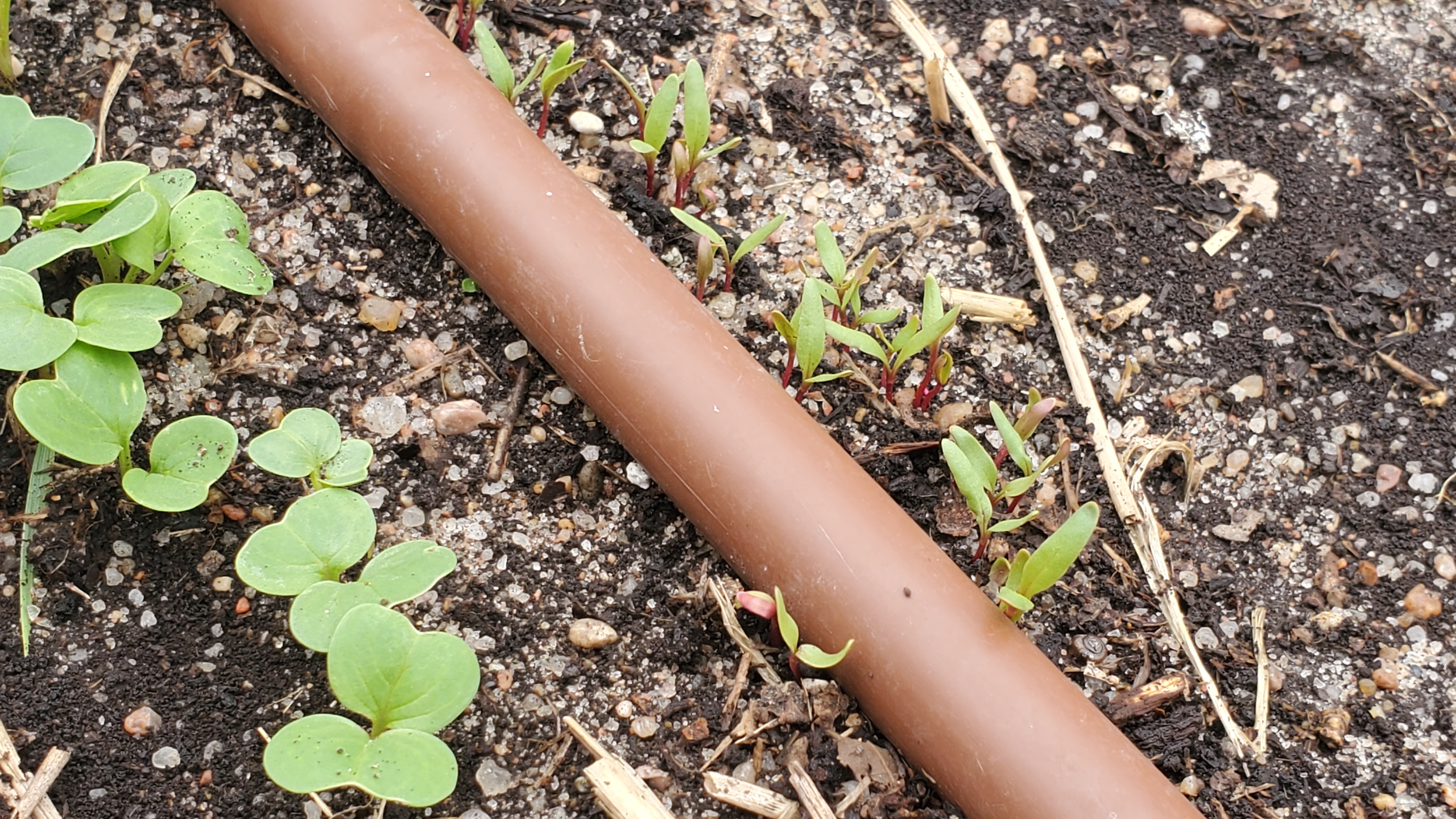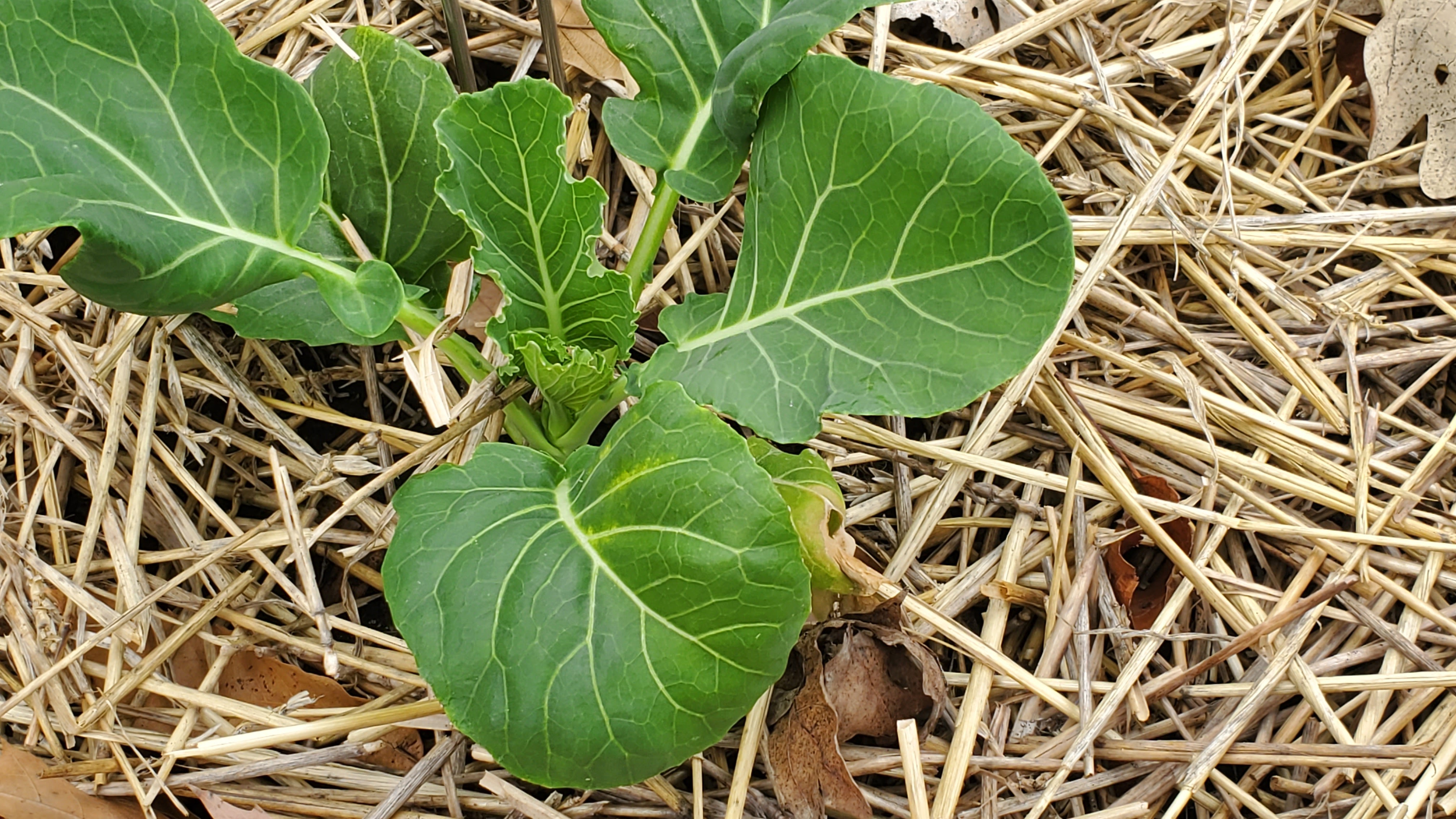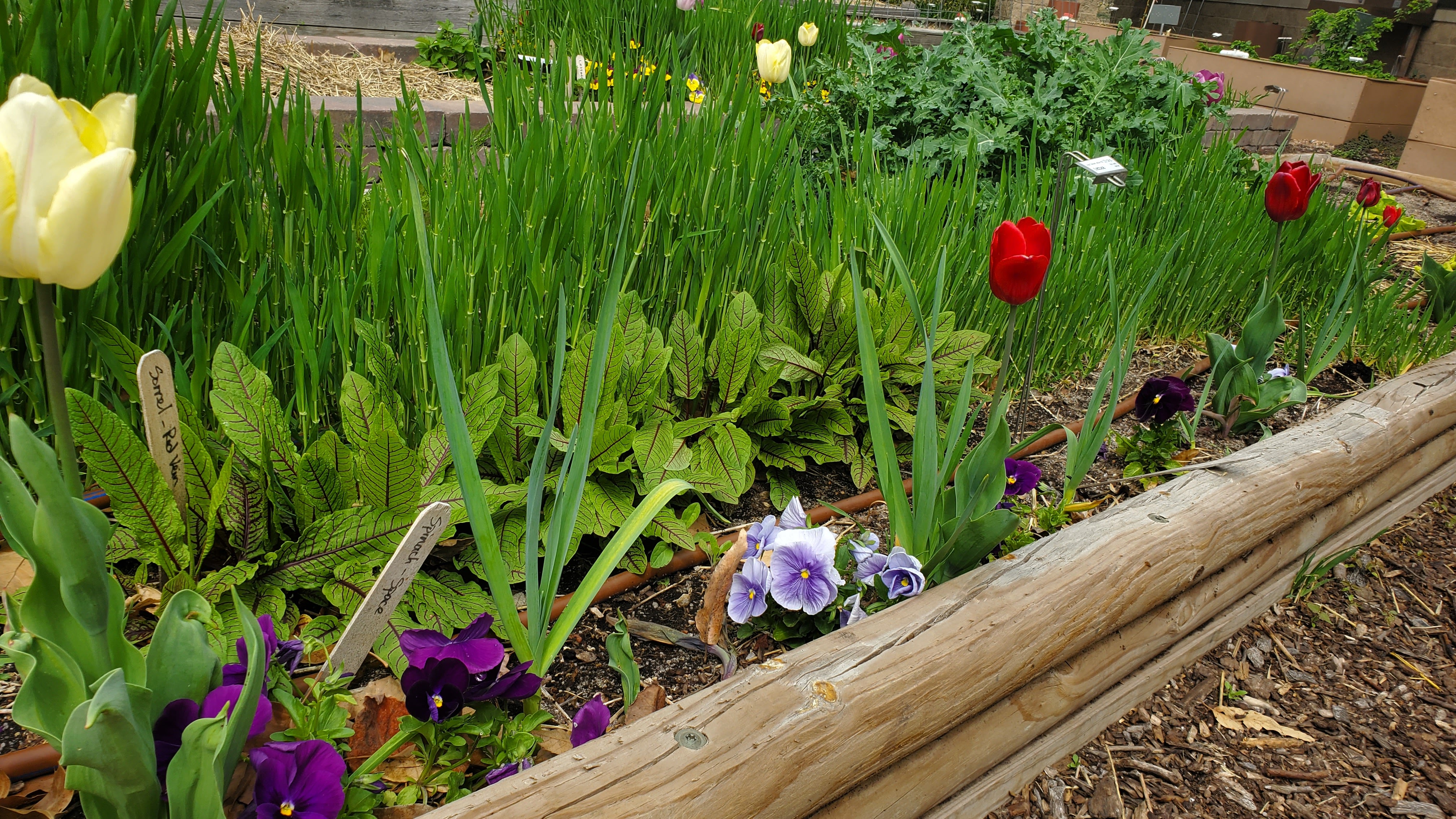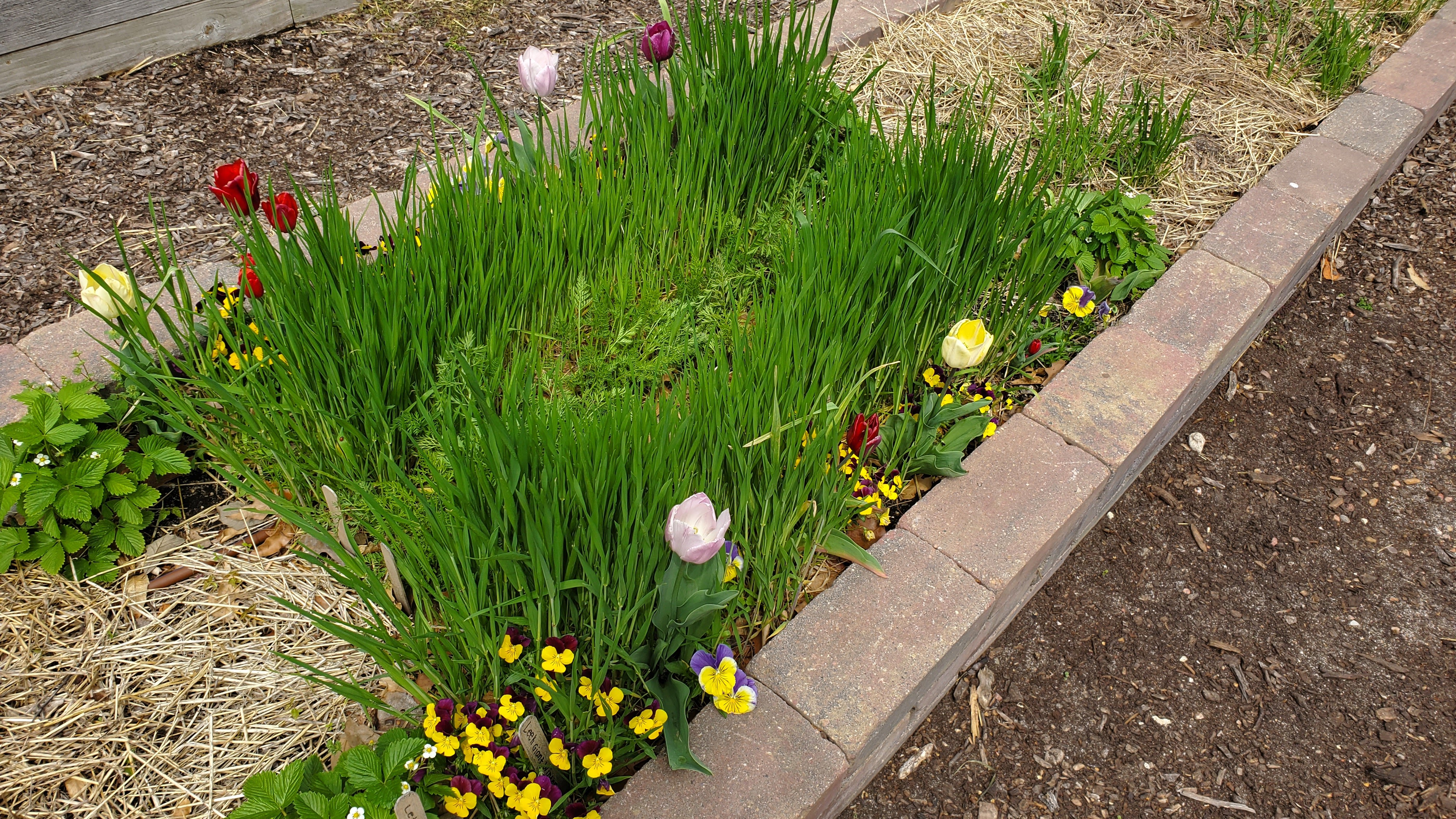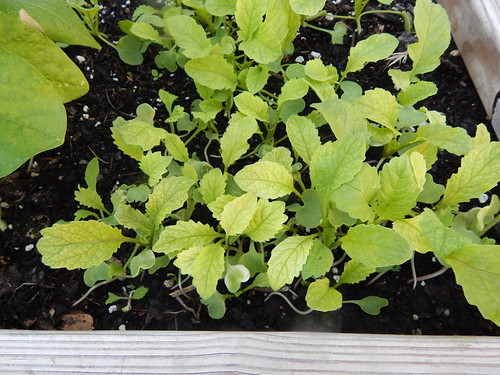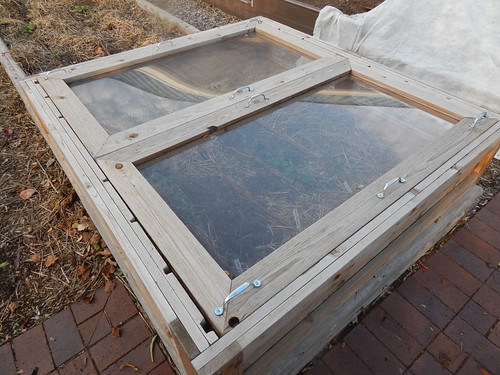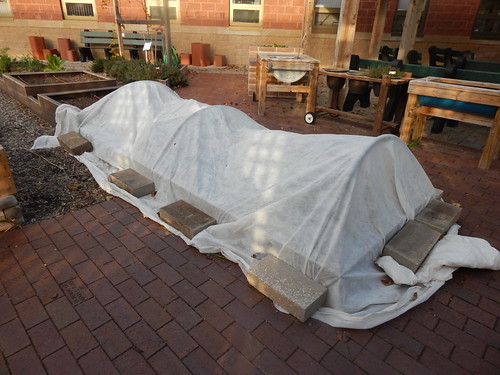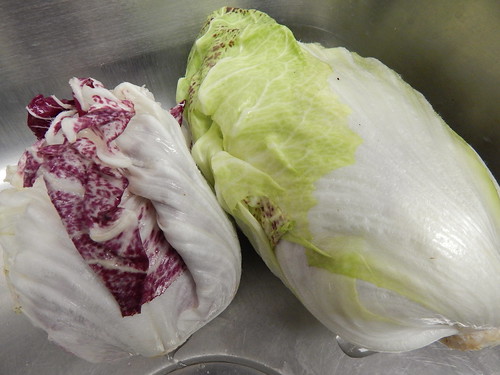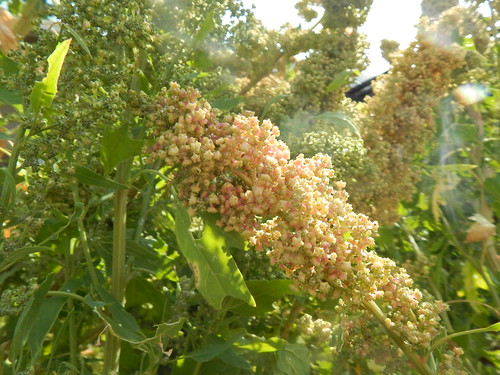Blog Archives
2021 Demo Garden Plans and Updates
Our Demo Garden plantings are well underway for this year, and we already have some exciting things to showcase. But first – here’s a quick overview of what we are planning to grow this year!

We chose to continue to focus our garden efforts on productivity and yield over diversity for this year. We are planning to continue donating our harvests to the Common Ground Producers & Growers Mobile Market for their Seniors First food box program, which provides free food boxes to low income seniors.
With that in mind, we are keeping each garden bed to only a couple different types of produce, although we still have more diversity of varieties than you might otherwise see. We are also focusing on interplanting and succession planting to use our space well. For example, in bed 1, we have radishes planted between rows of beets and carrots and IN the row with the parsnips to use every square inch of space. In Bed 2, we are filling the space with lettuce and spinach now, and then the peppers for the remainder of the season will be planted into the leafy greens while they finish their spring season. In Beds 4 and 5, we have planted broccoli, cauliflower, and peas under the trellises that will hold the cucumbers and squash later in the summer to get an additional crop out of those spaces.
The Master Gardeners have been hard at work getting the garden into shape for the spring, and almost all the beds have either seeds or transplants already growing. We had covered most of the beds with straw last fall, so that is both good and bad now – the soil stays moist with the straw, but we have lots of wheat seedlings growing. We also needed to move quite a bit of the straw around to facilitate seed planting.
The other thing I’m excited to show off a little bit are a couple of the school garden templates that I developed last year and planted last fall.
The templates are 4×8 layouts designed with high diversity (and relatively low productivity) for better interest and learning experiences in a school garden setting. (You can see all the templates and supporting information here: Kansas School Garden Guide.) Both of the templates shown here were designed to be planted last fall and overwintered. These overwintered with NO additional protection from the elements. They include pansies, tulips, garlic, shallots, alpine strawberries, barley or wheat, and vegetables (kale, carrots, red-veined sorrel, spinach).
If you haven’t been out in awhile, our garden is always open to the public – best viewed during daylight hours! Things will be changing fast as it gets warmer, so don’t miss out on the opportunity to visit.
Friday PhotoEssay – August 21, 2015
We seem to be in a bit of a late summer lull in the Demo Garden. We have a few things going for fall, the tomatoes are looking worse every week, and the squash aren’t quite ready to harvest.
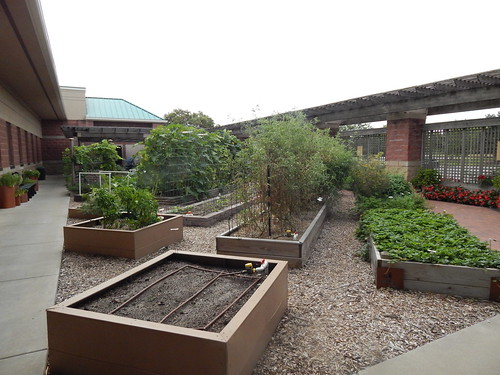 As you can see, the tomatoes continue to look more grey or brown than green, even though the tops of the plants are a little bit crazy. The beans we planted a couple weeks ago are up, but the spider mites seem to have attacked immediately. Luckily it is a bit cooler, keeping the mites slowed down somewhat.
As you can see, the tomatoes continue to look more grey or brown than green, even though the tops of the plants are a little bit crazy. The beans we planted a couple weeks ago are up, but the spider mites seem to have attacked immediately. Luckily it is a bit cooler, keeping the mites slowed down somewhat.
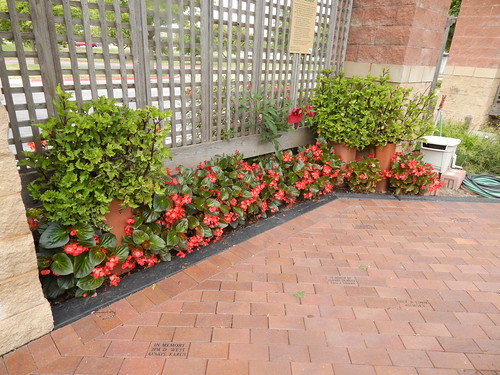 For the third year in a row, the begonias and coleus planted in this section of the garden look amazing! I’ll be honest that I don’t love begonias, but they are stunning in this spot.
For the third year in a row, the begonias and coleus planted in this section of the garden look amazing! I’ll be honest that I don’t love begonias, but they are stunning in this spot.
In this wheelchair barrel planter, we had potatoes in the spring that did extremely well. Since then, we tried planting beans but they didn’t grow well. It seemed silly to think of a nutrient deficiency when the potatoes did so well. But then we planted radishes, and it was clear two weeks ago (above) that the leaves were pale yellow and stunted. Below you can see the improvement.
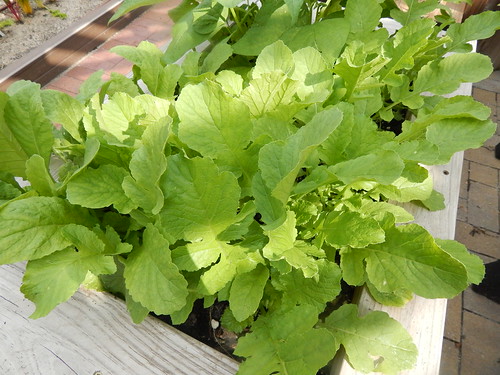 We fertilized and although there is still a bit of chlorosis (yellowing) they have grown well. We often forget with vegetable gardens that when we harvest a crop we are taking all of the nutrients from those vegetables out of the soil and consuming them. Just because a spot produced well last year or in the spring doesn’t mean that it won’t need additional fertilizer or compost before planting another crop. Maintaining and building our soil is a continual process!
We fertilized and although there is still a bit of chlorosis (yellowing) they have grown well. We often forget with vegetable gardens that when we harvest a crop we are taking all of the nutrients from those vegetables out of the soil and consuming them. Just because a spot produced well last year or in the spring doesn’t mean that it won’t need additional fertilizer or compost before planting another crop. Maintaining and building our soil is a continual process!
 This is something cool that you don’t see every day! This is one of the vines of the ‘Tromboncino’ squash. One of the neat things is that the seeds were planted at the other end of the bed and this plant has climbed all the way to the opposite corner of the bed. The other neat thing is that the vine has gone from round to flattened. This is a phenomenon called “fasciation.” A mutation happened at some point during growth and that mutation continued to manifest in all future growth on this vine. It doesn’t hurt anything, but it is a bit bizarre.
This is something cool that you don’t see every day! This is one of the vines of the ‘Tromboncino’ squash. One of the neat things is that the seeds were planted at the other end of the bed and this plant has climbed all the way to the opposite corner of the bed. The other neat thing is that the vine has gone from round to flattened. This is a phenomenon called “fasciation.” A mutation happened at some point during growth and that mutation continued to manifest in all future growth on this vine. It doesn’t hurt anything, but it is a bit bizarre.
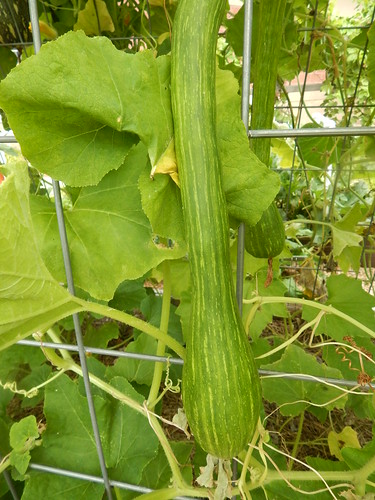 This is also the ‘Tromboncino,’ but these squash are a much darker green color than the others have been. I don’t know if this is a different vine (genetic variation of the seeds), if this is related to the mutation causing the fasciation shown above, or if this is a different mutation. The vines are such a jumble that I don’t think it is possible to sort out at this point. Anyway, it’s interested to all of a sudden have different colored squash!
This is also the ‘Tromboncino,’ but these squash are a much darker green color than the others have been. I don’t know if this is a different vine (genetic variation of the seeds), if this is related to the mutation causing the fasciation shown above, or if this is a different mutation. The vines are such a jumble that I don’t think it is possible to sort out at this point. Anyway, it’s interested to all of a sudden have different colored squash!
 I also caught this praying mantis hanging out on one of the squash last week. They can eat many insects, including grasshoppers, but I wonder if this one has been feasting on squash bugs?
I also caught this praying mantis hanging out on one of the squash last week. They can eat many insects, including grasshoppers, but I wonder if this one has been feasting on squash bugs?
Have a great weekend!
Preparing for the Sudden Onslaught of Winter
I feel like I spend a lot of time on this blog talking about the weather, but it really isn’t just idle conversation! The weather is extremely important to our success as gardeners. After one light freeze and lots of unseasonably warm weather, we are looking at more than a week of unseasonably cold temperatures. Overnight lows look like they will be hovering in the upper teens to low 20s for the better part of the next two weeks. (At least that low of 9 degrees is gone, for now!) Many of the cool season vegetables will tolerate temperatures down to 24 or 25 without significant damage, but two weeks of lows down around 20 is probably a bit much for them to tolerate, especially when they haven’t been hardened off with cold-but-not-too-cold temperatures.
So…it was time to harvest some things and cover others this afternoon! Because I can’t resist experimenting, I left one or two plants of almost everything in the garden, just to see what would happen.
We already had the cold frame out, but still open. We closed it up and tucked some straw along the back edge to keep the cold air out.
We also put hoops and row cover over the main section of spinach and radicchio. Normally I’d leave those out, but I think this will be a bit cold all of a sudden.
I left some of the other spinach around the garden uncovered, including the Indian variety. (I don’t have great hopes for its cold hardiness!)
I harvested a few of the radicchio plants to see what stage they were at. I also harvested the watermelon radishes, fennel, half the bunching onions, and most of the dandelion greens. I was just going to leave the lemongrass, but then I just couldn’t let it go to waste, so it went to our Foods & Nutrition department.
I’ll post more pictures and show what I did with some of the different vegetables later in the week!
Friday PhotoEssay – October 31
We made it to the “end” of the growing season! A few of the cold tolerant plants will keep going for a few more weeks, but everything else was removed this week. Take a look:
 This is from Tuesday morning, before we started working. We got the cold frame out last week for a tour, although we haven’t needed to close it yet. Maybe tonight before we leave.
This is from Tuesday morning, before we started working. We got the cold frame out last week for a tour, although we haven’t needed to close it yet. Maybe tonight before we leave.
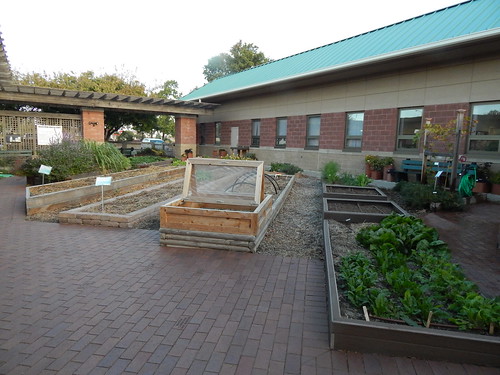 And this if from this morning. We did leave some of the herbs in, because we just couldn’t take them out when they were still looking good. I suspect that they will have to come out after this weekend.
And this if from this morning. We did leave some of the herbs in, because we just couldn’t take them out when they were still looking good. I suspect that they will have to come out after this weekend.
 We ended up with quite the pile in the “ready to compost” bin. Some of it may end up being to fibrous to easily compost, but it needed a chance!
We ended up with quite the pile in the “ready to compost” bin. Some of it may end up being to fibrous to easily compost, but it needed a chance!
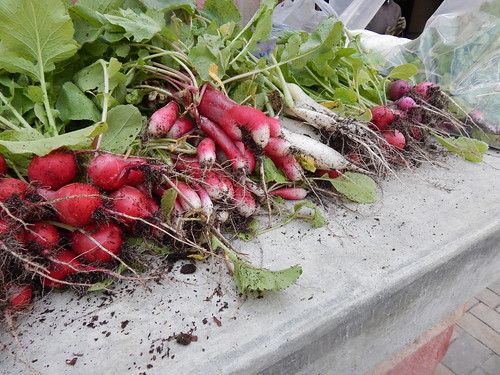 The radishes were ready to harvest, so we pulled most of them. This is what happens when you plant all the radishes at once rather than staggering them. You get a LOT of radishes all at once.
The radishes were ready to harvest, so we pulled most of them. This is what happens when you plant all the radishes at once rather than staggering them. You get a LOT of radishes all at once.
 We found these cool, lavender mushrooms growing under the cowpeas. No, we didn’t eat them, since we weren’t sure what they were.
We found these cool, lavender mushrooms growing under the cowpeas. No, we didn’t eat them, since we weren’t sure what they were.
 A couple of the kohlrabi were ready to harvest, so we gave them a taste test. If you’ve never had kohlrabi, they taste a lot like a turnip, but a little sweeter and more mild.
A couple of the kohlrabi were ready to harvest, so we gave them a taste test. If you’ve never had kohlrabi, they taste a lot like a turnip, but a little sweeter and more mild.
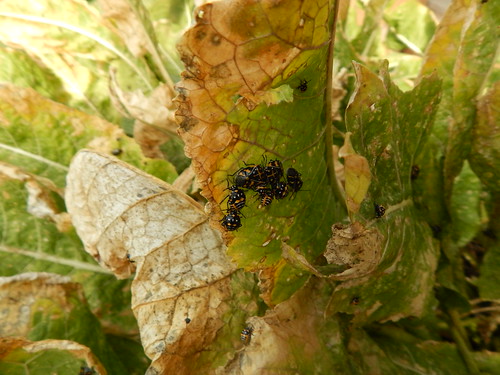 The mystery of the browning leaves on the horseradish was solved…by actually looking more closely at the plants. They have a bunch of harlequin bugs making a home on them. These bugs are most commonly found on kale, so I was a little surprised they were on the horseradish. Given the upcoming cold weather, we decided not to worry about them for now. Especially since it’s highly unlikely they will come close to killing the horseradish.
The mystery of the browning leaves on the horseradish was solved…by actually looking more closely at the plants. They have a bunch of harlequin bugs making a home on them. These bugs are most commonly found on kale, so I was a little surprised they were on the horseradish. Given the upcoming cold weather, we decided not to worry about them for now. Especially since it’s highly unlikely they will come close to killing the horseradish.
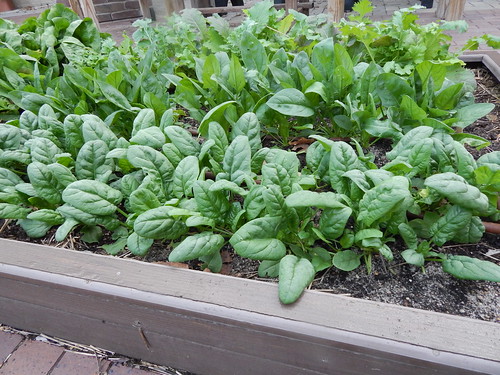 The spinach is looking great, and I expect it will continue looking good for weeks to come. Fall spinach is the best, especially as the weather gets colder and the leaves get sweeter!
The spinach is looking great, and I expect it will continue looking good for weeks to come. Fall spinach is the best, especially as the weather gets colder and the leaves get sweeter!
Have a great weekend! Stay warm!
Friday PhotoEssay – August 8th
It rained again! Quite a bit actually. The rain gauge in the garden only measured about 2″, but I hadn’t realized that the Cuban Oregano had kind of grown over it. So…we’re just guessing. Then again, we’re not that far from the airport that recorded less than an inch. My neighbor recorded 3.5 inches. (My rain gauge at home is laying on its side…not very effective for measuring the rain.)
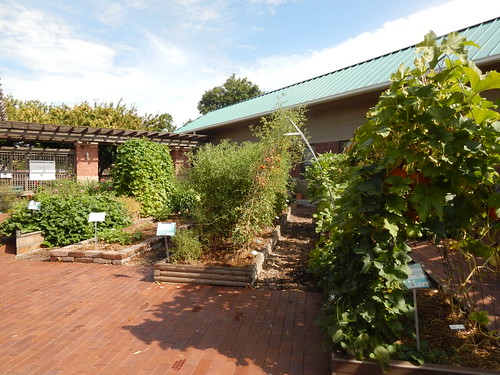 Here’s the whole garden picture from this morning. I feel like we are in a “maximum garden growth” stage with not much visible change at this point. Well…until you get closer, that is.
Here’s the whole garden picture from this morning. I feel like we are in a “maximum garden growth” stage with not much visible change at this point. Well…until you get closer, that is.
 There are a couple small berries on the ‘Ozark Beauty’ plants. They both had a couple of small bug bites, so I picked them off and sampled the other side of the fruit. My opinion? They were soft, which is understandable given the rain, but still too soft. It is usually considered “okay” for a fruit grown in a home garden to be softer, but I think these would have been mush by the time you picked a bowl full and took them inside. Assuming you could get a bowl full. They are small, which is also annoying. What would make up for these factors? Great flavor. Well…in this case the flavor was okay, but mostly just sweet with no depth. Again, partially explained by the rain, but still… This is a variety that you can find at lots of box stores in the spring and is touted as one of the best “everbearing” strawberries for home gardeners.
There are a couple small berries on the ‘Ozark Beauty’ plants. They both had a couple of small bug bites, so I picked them off and sampled the other side of the fruit. My opinion? They were soft, which is understandable given the rain, but still too soft. It is usually considered “okay” for a fruit grown in a home garden to be softer, but I think these would have been mush by the time you picked a bowl full and took them inside. Assuming you could get a bowl full. They are small, which is also annoying. What would make up for these factors? Great flavor. Well…in this case the flavor was okay, but mostly just sweet with no depth. Again, partially explained by the rain, but still… This is a variety that you can find at lots of box stores in the spring and is touted as one of the best “everbearing” strawberries for home gardeners.
Okay, because I can, I’m going to compare these to another variety (not in the Demo Garden) just to show the difference.
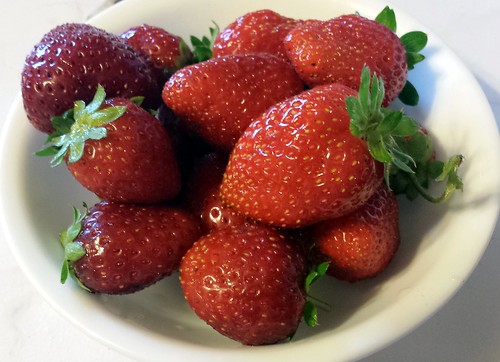 These strawberries are a variety called ‘Albion,’ which is one of the day neutrals we considered planting in this garden. Instead we chose ‘San Andreas’ which was supposed to be better than this variety. Unfortunately, it didn’t make it, we suspect due to residual herbicide issues. I have been getting a solid handful of berries from my plants (and a friend with the same plants has too). The berries are consistently medium to large sized, firm but not too firm, and have GREAT flavor. This is a variety that is a commercial variety for market growers. Maybe I’m missing something, but why wouldn’t this variety be better in your home garden too? Why as a home gardener should you be given the “best” choice of something that is clearly sub-par rather than a great variety like this one?
These strawberries are a variety called ‘Albion,’ which is one of the day neutrals we considered planting in this garden. Instead we chose ‘San Andreas’ which was supposed to be better than this variety. Unfortunately, it didn’t make it, we suspect due to residual herbicide issues. I have been getting a solid handful of berries from my plants (and a friend with the same plants has too). The berries are consistently medium to large sized, firm but not too firm, and have GREAT flavor. This is a variety that is a commercial variety for market growers. Maybe I’m missing something, but why wouldn’t this variety be better in your home garden too? Why as a home gardener should you be given the “best” choice of something that is clearly sub-par rather than a great variety like this one?
Okay, end of mini-rant.
 This is yet another case in point of why it is a good idea to pick your heirloom tomatoes early, when they just start to turn, rather than wait until they are fully ripe. This horrendous crack is due entirely to the rain we got.
This is yet another case in point of why it is a good idea to pick your heirloom tomatoes early, when they just start to turn, rather than wait until they are fully ripe. This horrendous crack is due entirely to the rain we got.
Do you see it? Do you see the tinge of pink showing up on this head of quinoa? Am I way to excited/anxious about this quinoa getting to the colorful stage? Yes, probably just a bit. If you think I may be more excited about the colors than actually harvesting the quinoa, you may be right.
 We have some radish seedlings! These are the Watermelon Radishes which seem to get planted at least every other year in the garden. These are in the MG Faves garden, so we will be looking for some colorful radishes later this fall.
We have some radish seedlings! These are the Watermelon Radishes which seem to get planted at least every other year in the garden. These are in the MG Faves garden, so we will be looking for some colorful radishes later this fall.
Have a great weekend!

